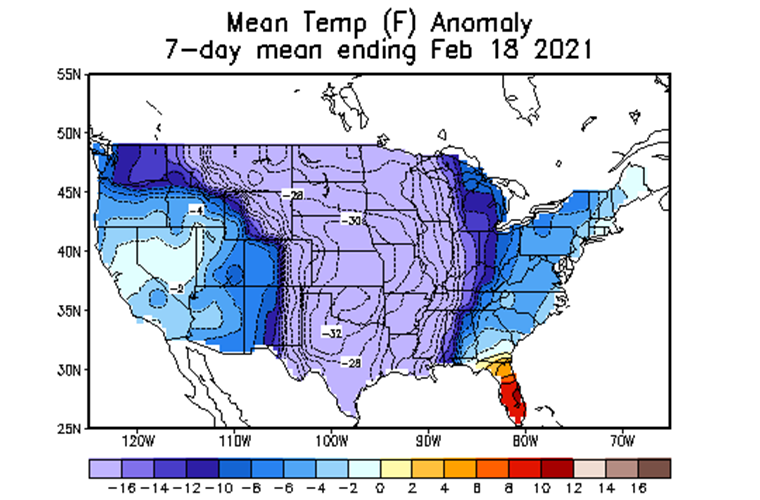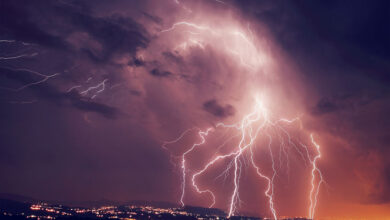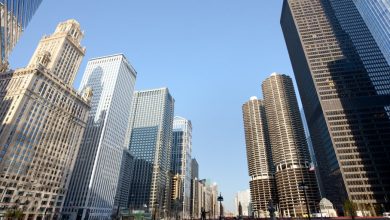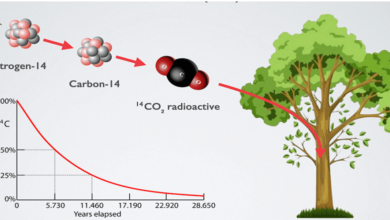Grid “Lack of ambition” Endangering the Green Energy Revolution • Watts Up With That?

Essay by Eric Worrall
According to the IEA, “the world must add or replace 80 million km of grids by 2040, equal to all grids globally today, to meet national climate targets and support energy security”.
Lack of ambition and attention risks making electricity grids the weak link in clean energy transitions
First-of-its-kind global study finds the world must add or replace 80 million km of grids by 2040, equal to all grids globally today, to meet national climate targets and support energy security
Efforts to tackle climate change and ensure reliable supplies of electricity could be put at risk unless policy makers and companies quickly take action to improve and expand the world’s electricity grids, according to a special report released today by the IEA.
Grids have formed the backbone of electricity systems for more than a century, delivering power to homes, factories, offices and hospitals – and their importance is only set to rise as electricity’s role in energy systems increases. But the new report, Electricity Grids and Secure Energy Transitions, which offers a first-of-its-kind stocktake of grids worldwide, finds signs they are not keeping pace with the rapid growth of key clean energy technologies such as solar, wind, electric cars and heat pumps. Without greater policy attention and investment, shortfalls in the reach and quality of grid infrastructure could put the goal of limiting global warming to 1.5 °C out of reach and undermine energy security, the report warns.
Achieving all national climate and energy goals will require adding or replacing 80 million kilometres of power lines by 2040 – an amount equal to the entire existing global grid – according to a detailed country-by-country analysis carried out for the report. Major changes to how grids operate and are regulated are also essential, while annual investment in grids, which has remained broadly stagnant, needs to double to more than USD 600 billion a year by 2030.
Issues are already emerging. The report identifies a large and growing queue of renewables projects waiting for the green light to be connected to the grid, pinpointing 1 500 gigawatts worth of these projects that are in advanced stages of development. This is five times the amount of solar PV and wind capacity that was added worldwide last year.
“The recent clean energy progress we have seen in many countries is unprecedented and cause for optimism, but it could be put in jeopardy if governments and businesses do not come together to ensure the world’s electricity grids are ready for the new global energy economy that is rapidly emerging,” said IEA Executive Director Fatih Birol. “This report shows what’s at stake and needs to be done. We must invest in grids today or face gridlock tomorrow.”
The role of electricity is set to continue growing strongly, increasing the demands on grids. The adoption of new technologies such as electric cars and heat pumps means electricity is expanding into realms previously dominated by fossil fuels. Meanwhile, countries are adding renewable energy projects at a fast rate – requiring more power lines to connect them to electricity systems and high-functioning distribution grids to ensure reliable supplies for end customers. This includes the digitalisation of distribution grids and enabling more flexibility through demand response and energy storage.
A new scenario developed for the report, the Grid Delay Case, examines what would happen if grid investment is not scaled up quickly enough and regulatory reforms for grids are slow. It finds that cumulative carbon dioxide (CO2) emissions between 2030 and 2050 would be almost 60 billion tonnes higher due to a slower rollout of renewables that results in higher fossil fuel consumption. This is equivalent to the total CO2 emissions from the global power sector over the past four years. It would put the global temperature rise well above the Paris Agreement target of 1.5 °C, with a 40% chance of exceeding 2 °C.
The report identifies several strategic actions that can make a difference. These include expanding and strengthening grid interconnections within countries, between countries and across regions to make electricity systems more resilient and allow them to better integrate rising shares of solar and wind power. The report recommends that governments back large-scale transmission projects to ensure grids are prepared for further strong growth in renewable power. And it urges grid developers and operators to embrace digitalisation to enable the grids of the future to be more resilient and flexible.
The need for decisive action is urgent because of the long lead times for modernising and extending grids. New grid infrastructure often takes 5 to 15 years to plan, permit and complete – compared with 1 to 5 years for new renewables projects and less than 2 years for new charging infrastructure for electric vehicles.
Improving and expanding grid infrastructure in countries worldwide will require stronger international collaboration. Emerging and developing economies, excluding China, have seen a decline in grid investments in recent years, despite robust electricity demand growth and ongoing efforts to meet energy access goals.
“Ensuring the developing world has the resources it needs to build and modernise electricity grids is an essential task for the international community,” Dr Birol said. “By mobilising financing, providing access to technology and sharing best practices on policies, leading economies can help improve people’s lives, strengthen sustainable development and reduce the risks of climate change.”
The referenced IEA Report is available here.
The report discusses some of the issues related to grid expansions:
Page 9: (dealing with objections) … Financial barriers can be addressed by improving the way grid
companies are remunerated, driving targeted grid funding and increasing cost
transparency. For other jurisdictions, such as Europe, the United States, Chile and
Japan, the strongest barriers relate to public acceptance of new projects and the
need for regulatory reform. Here, policy makers can speed up progress on grids
by enhancing planning, ensuring regulatory risk assessments allow for
anticipatory investments and streamlining administrative processes. …Page 29 (interconnectedness reducing power storage requirements) … While renewables integration and optimisation are a major factor, interconnecting
power systems can also serve an important storage purpose and enable electricity
trading. From an economic perspective, interconnections lead to cost savings,
revenue generation and market optimisation through power trading and
integration. IEA has published several reports on this topic, such as Large-scale
Electricity Interconnection, Integrating Power Systems across Borders and Power
Systems in Transition. …Page 51 (Praising strong central governments in China and India for overriding local planning concerns) … Significantly shorter lead times for transmission lines are observed in China and
India compared to advanced economies. In China, this is primarily due to
centralised decision-making and the government’s prioritisation strategy aiming to
connect the eastern load centres with renewable energy-rich northern and western
provinces through UHV lines. Similarly in India, the government has been
prioritising the rapid development of inter- and intra-state transmission capacity
though national programmes (e.g. Green Energy Corridor), supported by
significant investment. Dedicated policy tools have helped fast-track the buildout
of thousands of kilometres of lines in record time, driven initially by pressing
concerns about electricity security and more recently by ambitious targets to
evacuate green power from renewable energy zones. …Page 72 (the need for massive subsidies) … One approach is to explicitly dedicate a grid development budget that can be allocated to different projects. The US Congressional Budget Office estimates that total support from the Inflation Reduction Act of 2022 (IRA) and the Infrastructure Investment and Jobs Act of 2021 will surpass USD 430 billion from 2022 through to 2031, of which the IRA provides USD 760 million in grants to siting authorities to facilitate the siting and permitting of transmission projects. The National Renewable Energy Laboratory estimates that the US IRA could enable 24 TW-miles of transmission capacity by 2030, which is a 16% increase in total installed capacity relative to the current level. …
Page 82 (
energy rationingdemand response coming) … The APS indicates that by 2050 nearly half of the world’s grid flexibility needs would be met by demand response and battery storage. With the growing use of electricity for air conditioners, heat pumps, EVs, electrolysers and other potentially flexible sources of demand, there is potential for significant load shifting. Demand-side flexibility is equally important in advanced economies as well as in EMDEs. …
$430 billion could buy a lot of border security, school repairs, road repairs, better policing and healthcare. All of it is being spent to provide a commodity – electric power – which is already available from other sources.
Australia gets a few mentions. I’m guessing Australia is supposed to be a showpiece for the green energy revolution, if it can’t be made to work in sunny Australia, it can’t be made to work anywhere.
The report blames lack of capacity for renewable energy curtailment, where renewable operators are forced to go partially or completely offline. They ignore that all of these renewable operators could purchase allegedly affordable energy storage systems, to make their systems dispatchable.
Of course, affordable energy storage would have to be a real thing to make this solution a possibility.
The report also mentions the need for a significant increase in mining – producing materials like Alumina and Copper for electrical cable, and structural steel.
I doubt interconnectedness would help nearly as much as the IEA makes out. Adverse weather conditions are frequently very geographically widespread, so for interconnectedness to replace energy dispatchability, the interconnected grid would need to have the capacity to draw power from extraordinary distances. The most extreme case of distant power would be winter. All renewable sources drop in winter, wind speeds tend to be lower, and in the North there is a lot less solar energy available. So a truly interconnected grid would have to be able to transfer a sizeable fraction of the world’s energy demand across the equator.
Even if sufficient overcapacity was built to carry northern hemisphere nations through winter, large scale adverse weather conditions could still mess everything up. Consider the Texas ice storm of 2021. It wasn’t just Texas which was affected, freezing cold temperatures were experienced across a large swathe of the United States.

Where would the Southern USA have drawn the additional renewable energy from – Northern states? And the power load would have seriously exceeded normal energy use, people would not be keen to turn their home heating down in the middle of freezing temperatures.
None of this grid capacity panic would be an issue if climate obsessed governments embraced zero carbon nuclear power. Nuclear power is dispatchable, unlike renewables, and requires no more grid capacity than equivalent fossil fuel plant and equipment.
I strongly suspect grid capacity will be the stumbling block which kills the green energy revolution, at least in democracies and republics where politicians answer to voters. Even India will eventually face some backlash, though for now it seems likely most Indians support grid projects, especially to regions which have a long history of unreliable or non-existent grid electricity.
Only dictatorships like China can hope to consistency steamroller opposition to unsightly, unpopular grid extensions, on anything like the timeframe green targets would require. I’ve seen first hand the kind of anger building unsightly grids through rural property can create in landowners. That anger is not going away anytime soon.




